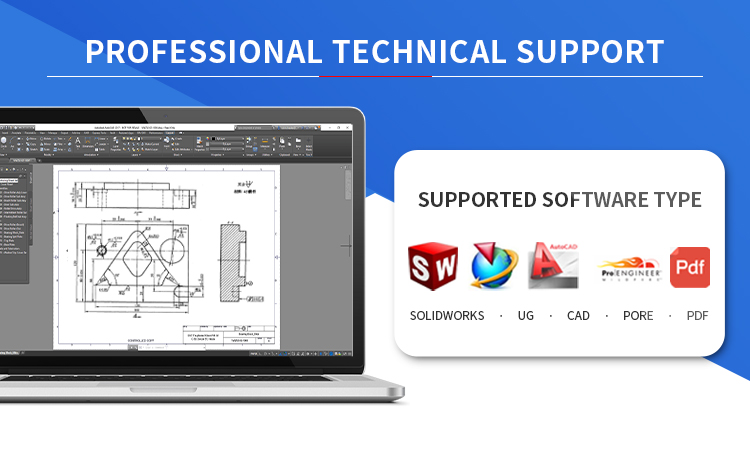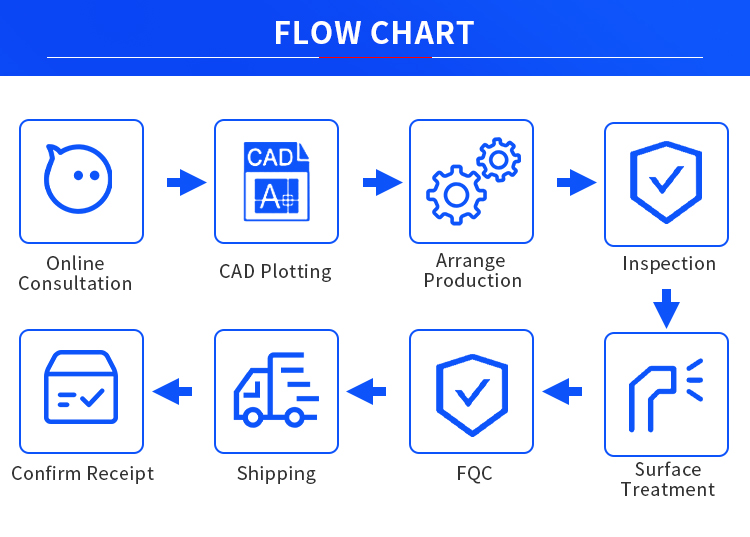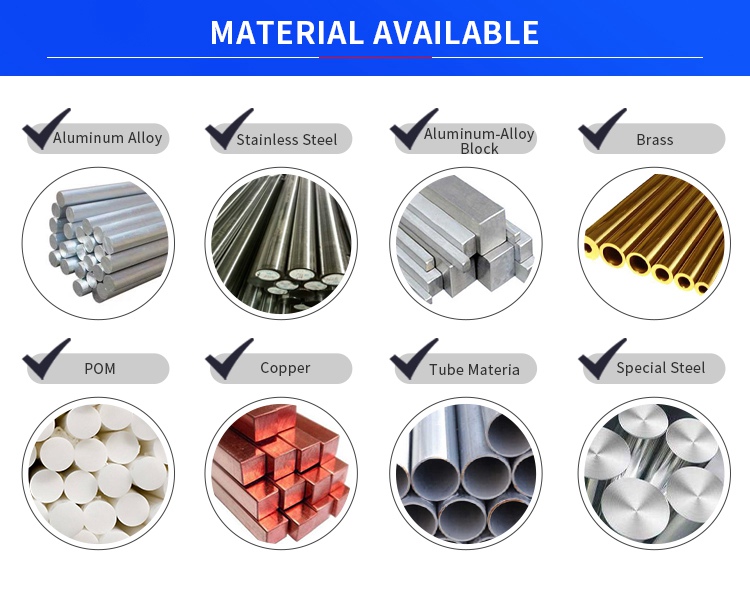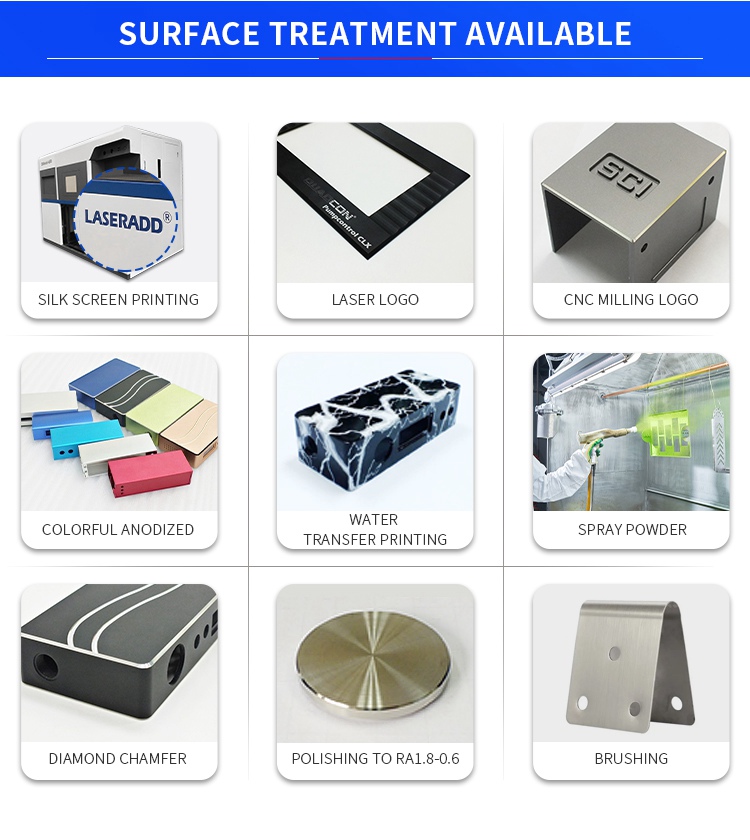CNC Machined Aluminum 6061 Rear Dual Caliper Bracket
What are CNC Machined Aluminum 6061 Rear Dual Caliper Bracket?
CNC Machined Aluminum 6061 Rear Dual Caliper Brackets are specialized components used in automotive braking systems. Crafted from high-quality aluminum alloy 6061, these brackets undergo precision machining using Computer Numerical Control (CNC) technology.
Their primary function is to securely mount two brake calipers on the rear axle of a vehicle, providing enhanced braking performance. This setup is commonly employed in performance vehicles, off-road rigs, and racing applications where additional braking power or control is required.
The CNC machining process ensures tight tolerances and exacting specifications, resulting in brackets that are lightweight, durable, and corrosion-resistant. By distributing braking force more evenly across the rear axle, these brackets improve overall braking efficiency and stability, especially during high-speed or heavy-duty driving conditions.
Designed for easy installation and compatibility with various brake systems, CNC Machined Aluminum 6061 Rear Dual Caliper Brackets offer enthusiasts and mechanics a reliable solution for upgrading their vehicle's braking capabilities.
Exploring How CNC Machining Enhances the Quality and Precision of Brackets
CNC (Computer Numerical Control) machining has revolutionized the manufacturing industry by offering unparalleled precision and efficiency in producing complex parts and components. This article delves into the ways CNC machining enhances the quality and precision of brackets, particularly in the automotive and aerospace sectors.
1.Precision Engineering with CNC Machining:
Overview of CNC machining technology and its role in modern manufacturing.
Explanation of how CNC machines follow precise instructions from CAD (Computer-Aided Design) models to produce accurate and intricate parts.
2.Improved Material Utilization:
Discuss how CNC machining optimizes material usage by minimizing waste and maximizing the use of raw materials.
Highlight the cost-effectiveness of CNC machining in reducing material waste and production costs.
3.Consistency and Reproducibility:
Explore how CNC machining ensures consistency and reproducibility in producing identical brackets, even in large production runs.
Discuss the importance of consistent quality in meeting stringent industry standards and specifications.
4.Complex Geometries and Intricate Designs:
Showcase how CNC machining enables the production of brackets with complex geometries and intricate designs that are difficult to achieve using traditional manufacturing methods.
Illustrate examples of brackets with intricate features and tight tolerances made possible by CNC machining.
5.Tight Tolerances and High Accuracy:
Explain how CNC machining achieves tight tolerances and high accuracy, meeting the precise dimensional requirements of brackets.
Discuss the significance of tight tolerances in ensuring proper fitment and functionality of brackets in assemblies.
6.Reduction of Human Error:
Highlight the role of CNC machining in minimizing human error and variability in manufacturing processes.
Discuss how automation and computer-controlled processes eliminate the potential for errors associated with manual machining operations.
7.Flexibility and Adaptability:
Discuss the flexibility of CNC machining in producing brackets of various sizes, shapes, and complexities.
Highlight the ability of CNC machines to quickly switch between different manufacturing tasks, allowing for rapid prototyping and production adjustments.
8.Surface Finish and Aesthetics:
Explore how CNC machining can achieve superior surface finishes and aesthetics on bracket surfaces.
Discuss the importance of surface finish in enhancing the appearance and functionality of brackets, especially in visible applications.
9.Integration with CAD/CAM Software:
Explain the seamless integration of CNC machining with CAD/CAM software, allowing for efficient programming and optimization of machining processes.
Discuss the role of CAD/CAM software in simulating machining operations and identifying potential issues before production.
10.Future Trends and Innovations:
Explore emerging trends and innovations in CNC machining technology, such as advancements in multi-axis machining, additive manufacturing, and real-time monitoring.
Discuss how these advancements are further enhancing the quality, precision, and efficiency of bracket manufacturing.
In conclusion, CNC machining plays a pivotal role in enhancing the quality and precision of brackets used in various industries, including automotive and aerospace. Its ability to produce complex geometries, achieve tight tolerances, and ensure consistency makes it indispensable for manufacturing high-quality brackets. As CNC machining continues to evolve with technological advancements, it will remain at the forefront of bracket manufacturing, driving innovation and efficiency in the production process.
In the past 15 years, we have successfully processed many complex aluminum parts. The industry involves precision industries such as aviation, automobiles, and healthcare. During the processing, we followed all safety regulations and conducted quality control on each component to ensure that it meets customer requirements.
We will continue to focus on processing aluminum parts. We will explore more processing methods and technologies to improve our production efficiency and quality. We also maintain close contact with customers to ensure that we meet their needs and exceed their expectations.









| Business Type | Factory / Manufacturer |
| Service | CNC Machining |
| Turning and Milling | |
| CNC Turning | |
| OEM Parts | |
| Material | 1). Aluminum: AL 6061-T6, 6063, 7075-T, etc |
| 2). Stainless steel: 303,304,316L, 17-4(SUS630) etc | |
| 3). Steel: 4140, Q235, Q345B,20#,45# etc. | |
| 4). Titanium: TA1, TA2/GR2, TA4/GR5, TC4, TC18, etc | |
| 5). Brass: C36000 (HPb62), C37700 (HPb59), C26800 (H68), C22000(H90) etc | |
| 6). Copper, bronze, Magnesium alloy, Delrin, POM, Acrylic, PC, etc. | |
| Finish | Sandblasting, Anodized color, Blackening, Zinc/Nickl Plating, Polish, |
| Powder coating, Passivation PVD, Titanium Plating, Electro galvanizing, | |
| electroplating chromium, electrophoresis, QPQ(Quench-Polish-Quench), | |
| Electro Polishing, Chrome Plating, Knurl, Laser etch Logo, etc. | |
| Main Equipment | CNC Machining center(Milling), CNC Lathe, Grinding machine, |
| Cylindrical grinder machine, Drilling Machine, Laser Cutting Machine, etc. | |
| Drawing format | STEP,STP,GIS,CAD,PDF,DWG,DXF etc or samples. |
| Tolerance | +/-0.01mm ~ +/-0.05mm |
| Surface roughness | Ra 0.1~3.2 |
| Inspection | Complete inspection lab with Micrometer, Optical Comparator, Caliper Vernier, CMM |
| Depth Caliper Vernier, Universal Protractor, Clock Gauge, Internal Centigrade Gauge | |
| Capacity | CNC turning work range: φ0.5mm-φ150mm*300mm |
| CNC milling work range: 510mm*1020mm*500mm |









